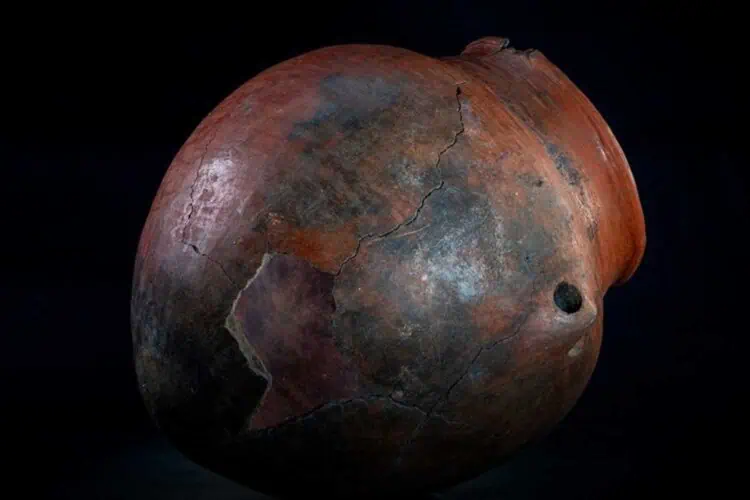A remarkable archaeological find has been made at Kagga Kamma Nature Reserve, located in the diverse and scenic Cederberg range of the Western Cape.
A ceramic pot, believed to be between 500 and 2,000 years old and linked to the Khoekhoen people, has been discovered, offering valuable insights into the region’s ancient inhabitants.
What Is the historical significance of the ceramic pot found at Kagga Kamma?
The ceramic pot is considered a significant find due to its age and remarkable preservation.
Heritage Western Cape has authenticated the pot as a Khoekhoen artefact, known for its unique lugged design which facilitated transportation.
This discovery provides a tangible connection to the Khoekhoen, one of the early pastoral communities in the region.
The Khoekhoen, historically referred to as Khoikhoi, are an indigenous group of people from southwestern Africa, closely related to the San people.
They have traditionally been pastoralists, known for their herding of cattle and sheep.
The term “Khoikhoi” translates to “people of people” or “real people,” which is a distinction they made to differentiate themselves from other groups, particularly the San hunter-gatherers.
How was the Ceramic Pot at Kagga Kamma Discovered and Retrieved?
The discovery was made by visitors, Ivan and Elizma van Niekerk, who stumbled upon the pot hidden under a crag during a walk.
Recognising the importance of their find, they left the pot undisturbed and alerted the reserve management, which prevented further disturbance of the site and allowed for proper archaeological handling.
The pot is described as amphora-shaped with a wide mouth tapering towards a rounded base, typical of Khoekhoen pottery which often featured lugs or ears for carrying.
The red ochre clay composition and evidence of scorching suggest it was used for cooking over open fires.
Despite some minor damage, including a small hole and several cracks, the pot’s integrity remains intact.
What does the ceramic pot reveal about ancient life at Kagga Kamma Nature Reserve?
Archaeological assessments suggest that the pot could date back as much as 2,000 years.
This period correlates with the arrival of the first Khoekhoe herders in the Cape, known for introducing livestock and pottery to the region.
The site of the discovery near a seasonal water source and the presence of other cultural artefacts indicate it may have been a temporary campsite used by Late Stone.
This ceramic pot is associated with an age group that reveals how tools and domestic practices evolved over millennia.
The presence of scorched areas and its shape suggest that it was not just a vessel for storage but also used for cooking, indicating a sedentary lifestyle that involved meal preparation.
Given the vastness of the reserve and the historical richness suggested by this find, more systematic archaeological surveys could uncover additional artefacts or even entire sites, which would offer deeper insights into the lives of the Khoekhoen people and their interactions with the environment.






